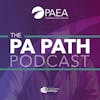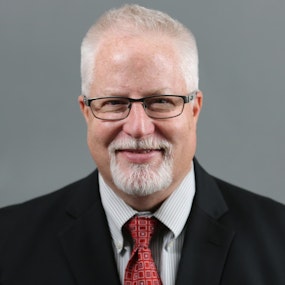
As a military veteran and former Search and Rescue Hospital Corpsman, the skills I brought to PA training were different than many of my classmates. We all offered something unique and we all made it through. The diversity of experiences supported a better learning environment. Military veterans bring mature life perspectives from the cultural and diverse environments they deploy to and work among with their peers. The military can be one of the most diverse environments in the world and it is an excellent representative example of our nation. The discipline that the military members experience and live with can carry on to their academics and in many cases the way their carry themselves in the classroom and clinical environments. So why do so few enter our profession these days? Well, the profession has evolved from a certificate program in the early years to what now culminates in a master’s degree and that has some impact on military veterans who have yet to complete their bachelor’s degree. Routine deployments are tough enough, but deployments when the country is in a lengthy war are very commonplace thus impacting the ability of military members to complete their degree. By the time many leave the service they are fatigued and, in some cases, struggling to reacclimate to the civilian life. Imagine racing through the mountains just above the treetops in a helicopter and then heading into a “normal” life as a civilian. There are no typical comparisons. Our profession is better off for having military veterans in it and our classrooms are better off for having their life experiences shared among their peers so how do we turn the tide in this battle? Some data suggests we need to stop waiting on the applicant pool to come to us and start seeking the applicants we wish to represent our profession in the future(3). Start by identifying resources available to veterans at your institution. This may include a veterans center, financial aid personnel who have worked with the GI Bill or the Yellow Ribbon Scholarship which provides shared scholarships for veterans with the help of the schools. Identify veterans who have already navigated the PA path and ask them to help you in reaching out to others. Work with your undergraduate institution to build a pathway to PA school with a recognition of the schooling that many veterans receive while on active duty and roll out the red carpet for those who seek to learn more(4). In the end, the future of our profession relies upon those of us in PA education to stop waiting for the masses to come to us and to start defining the diversity we seek to shape the health outcomes of our nation and the world. Military veterans will often provide a multitude of intersections in diversity for a program all while quietly succeeding through the rigor before moving on to care for our communities.
- Brock DM, Wick KH, Evans TC, Gianola FJ. The physician assistant profession and military veterans. Military Medicine. 2011,176:197-203.
- Physician Assistant Education Association. Research student report 4: By the numbers: Data from the 2019 matriculating student and end of program surveys. Accessed on August 4, 2021 at: https://paeaonline.org/wp-content/uploads/imported-files/student-report-4-updated-20201201.pdf
- Rohal'ová O, Ender MG, Matthews MD. Inclusion in the American Military: A Force for Diversity. Lanham; Boulder ; New York , London: Lexington Books; 2019.
- Wick K, and Tozier W. Physician assistant program outreach to military service members as potential applicants. Journal of PA Educ, 2015. 26(1):28-33.




